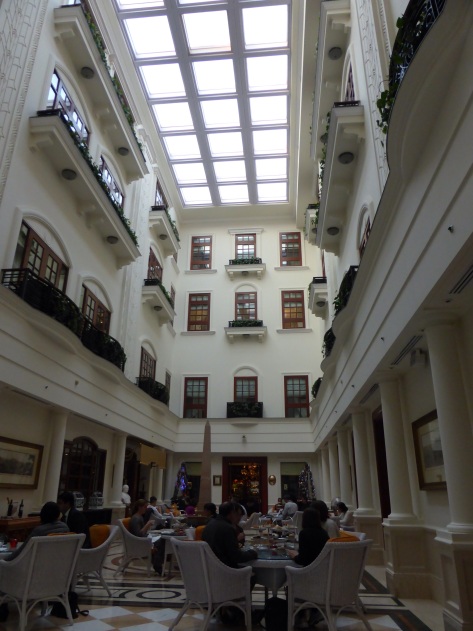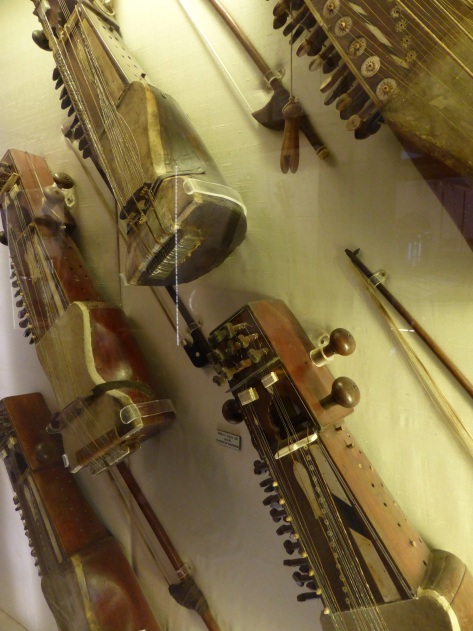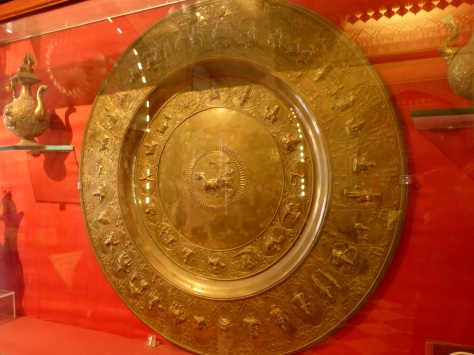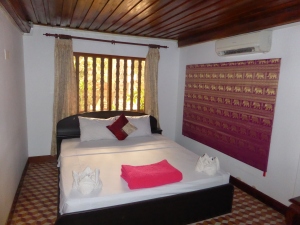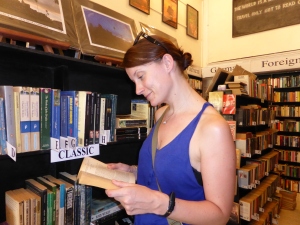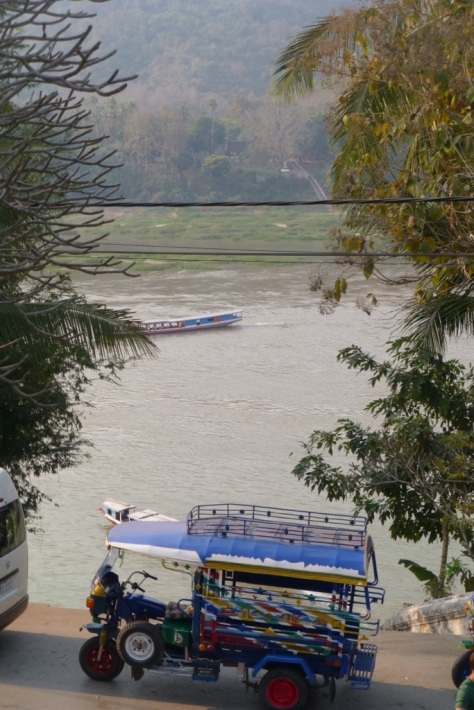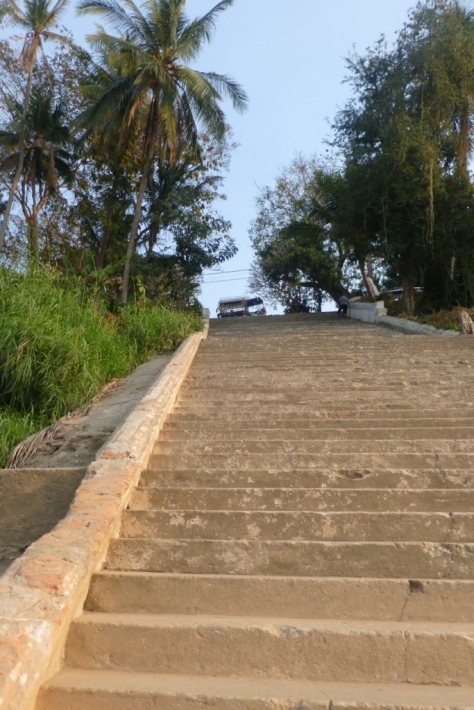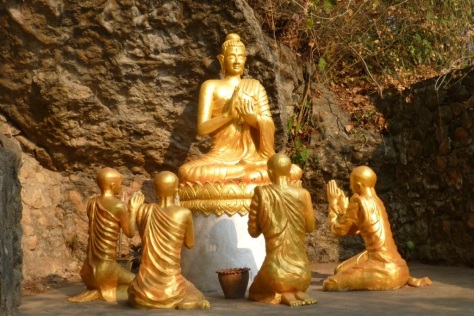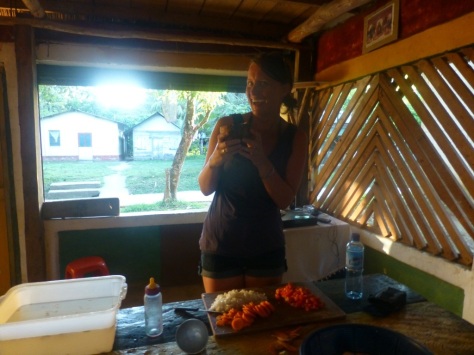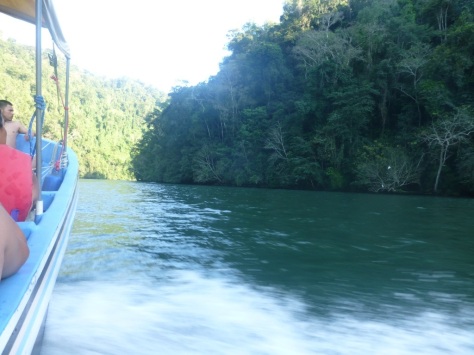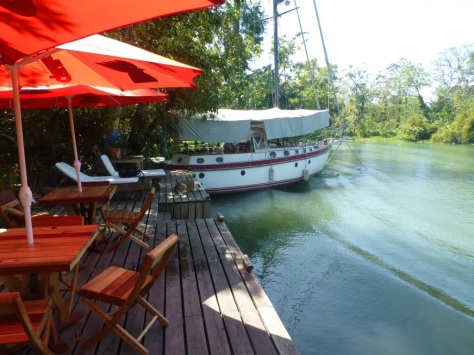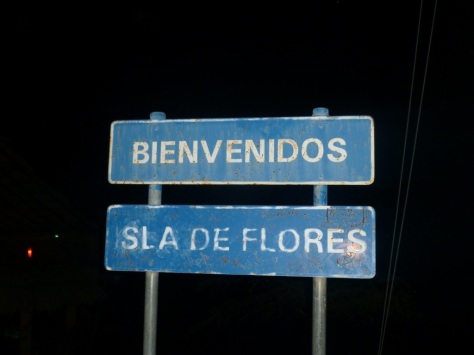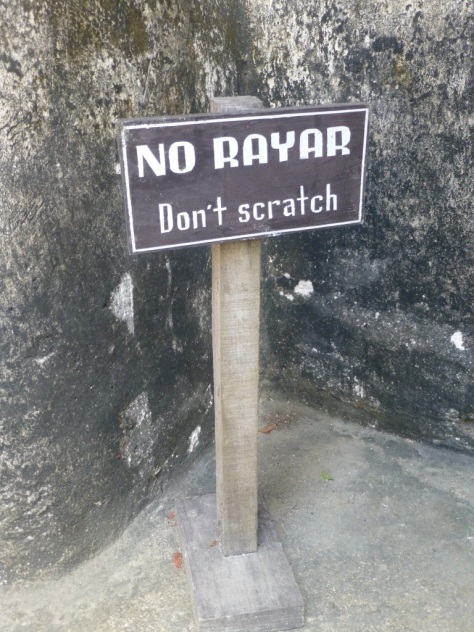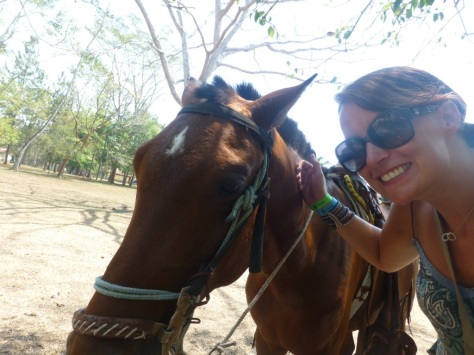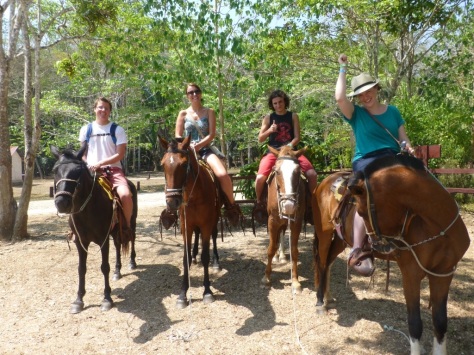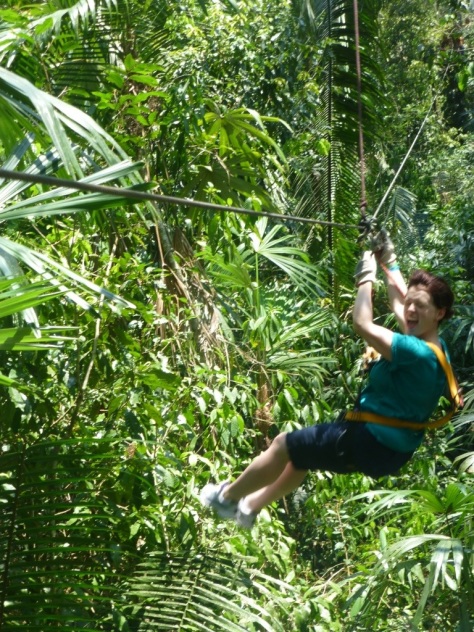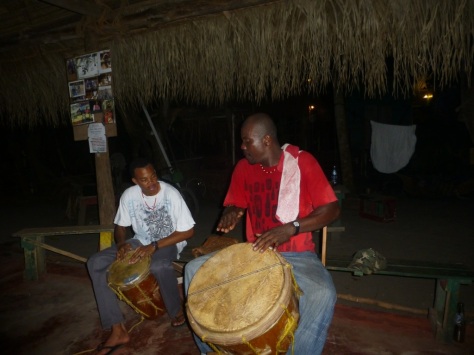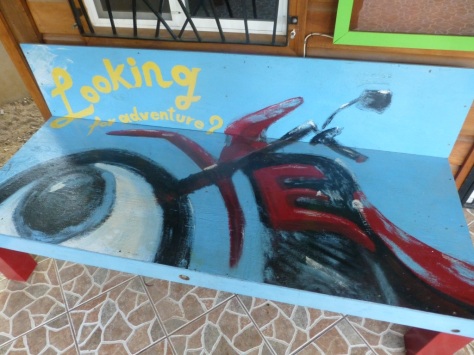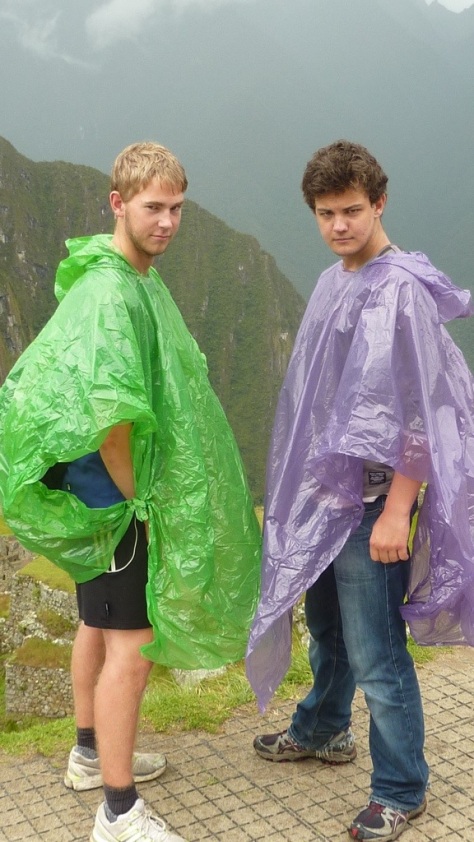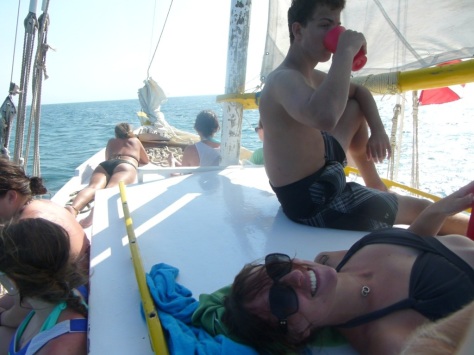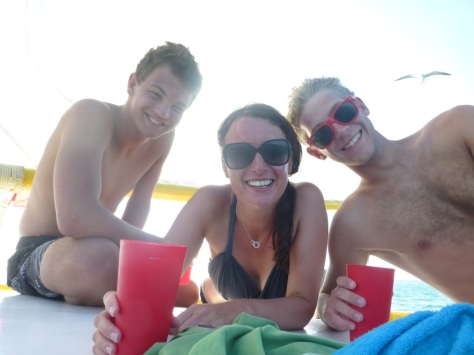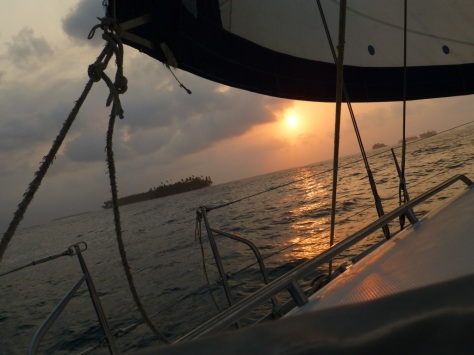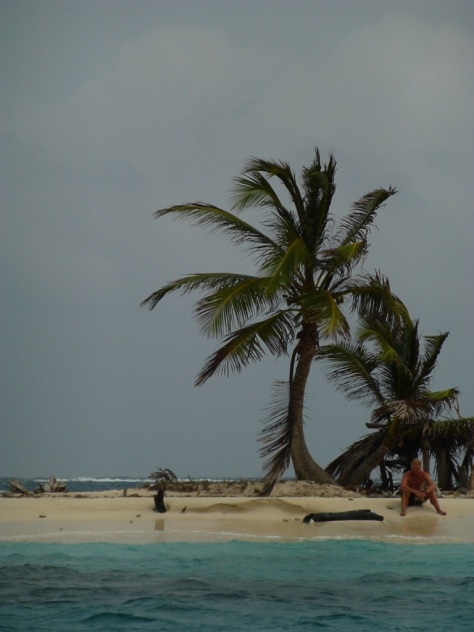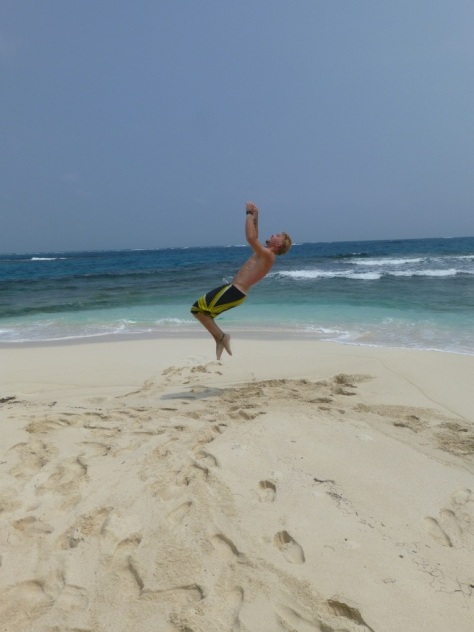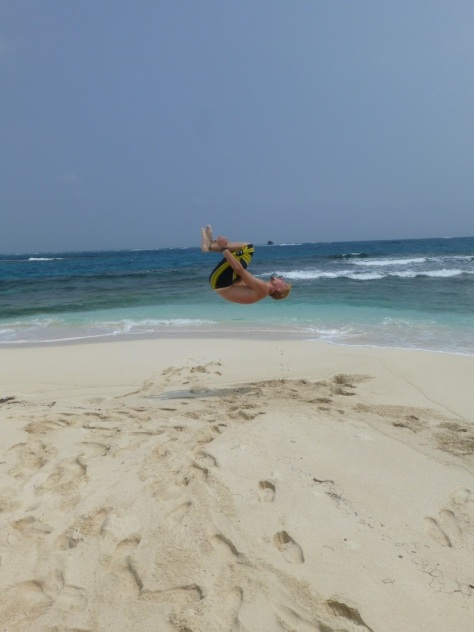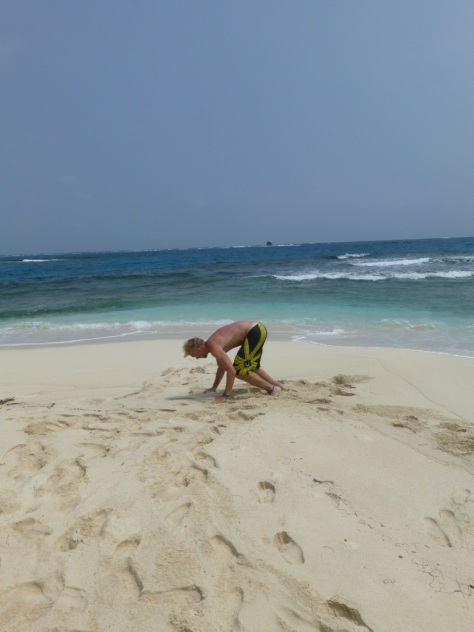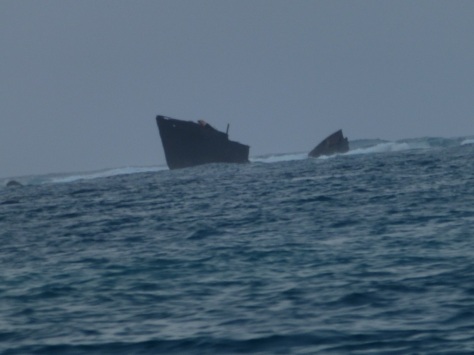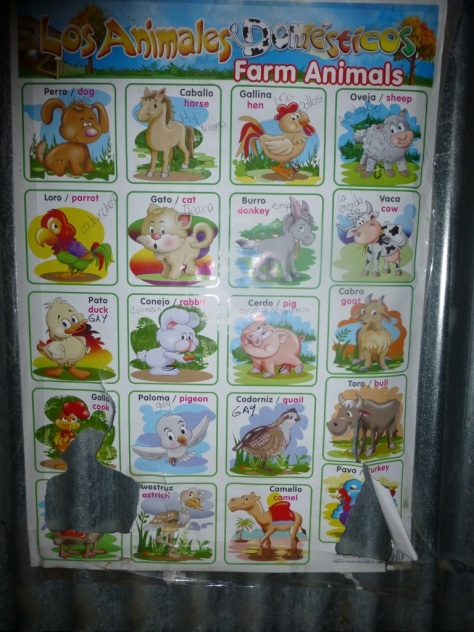Holy Varanasi, for me, is where things start to get really interesting. Maybe it’s because the clutches of the chest infection are loosening on my bones, maybe it’s because we’ve started to combat the jetlag or maybe it’s because it’s the first place we’ve stopped for more than two nights.
But it’s more likely to be because this is India as I had imagined it. Challenging, spiritual, colourful, relentless, flamboyant, unapologetic and did I mention challenging?
Our journey here is far more palatable than it could have been. Severe fog in North India is seriously hampering the railways and our pre-booked train is late to the tune of 18 hours. So, we bite the bullet and arrange a driver for the 9 hour road trip and make a sharp exit from our Agra hostel at 4am.
The driver, Mistra, works for the homestay we’re on our way to, and has a penchant for lateral-thinking puzzles. When we’re not asleep, we’re guessing at conundrums he poses us such as:
“Imagine you’re in a box, there’s no windows and no doors. How do you get out of the box?” Cue much head scratching until the irritating answer reveals itself. “You just stop imagining!” He yelps clapping gleefully.
Yes, my favourite parts of that journey were the parts when I was asleep.
Out on the motorways, we stop to pay tolls which are passed to no less then three men en route to the cashier. It seems India’s approach to employment is ‘why have one when you can have four.’ It’s something a lot of people I’ve worked for could learn from! The approach in London is more like, ‘it’s a four person job…let’s hire two and load’em up.’
Huge developments on the roads are taking place, we swerve from lane to lane to bypass roadworks. India also seems to be one of the only countries I’ve been where it’s your responsibility as a driver to let those in front of you know that you’re there…with a constant tooting of the horn.
Rear view and wing mirrors are purely decorative and obsolete. Trucks and tuk tuks even exhibit threateningly direct orders on their brightly painted rears.*
Mistra even toots at stationary and empty vehicles for good measure. We wonder aloud how you attract attention or demonstrate displeasure given that’s the sole use for our horns.
Eventually, through bleary eyes, we swirl into the heavier traffic of Varanasi. When I was a kid, we’d play in the garden with sprinklers and hosepipes. The traffic in Varanasi is like the water in a hosepipe when you put your thumb over it. The pressure builds up and water goes in all directions, at different speeds. It’s frenetic and impossible to second-guess.
One lane forcibly becomes five. It’s a cacophony of horns, punctuated by fast bursts of acceleration and even faster intense braking. Hindus believe in reincarnation. I wouldn’t want to come back as a brake pad, but I would want to come back as an insurance broker. Mistra cheerfully tells us that you don’t need to pass a driving test here, but if the police stop you for bad driving, a baksheesh (bribe) usually does the trick.
We settle into Homestay run by Harish Rijhwani and family. Homestays in India are much like the Casa Particular system I saw in Cuba back in 2010. Your room is part of the family home, and you eat breakfast, lunch and dinner with them allowing you to get closer to their culture than in a hotel. They’re far better value for money than the hostels in India, plus a much more authentic experience. This one in particular is great and Harish becomes more than our host over those days. He becomes our guardian and teacher.
Once settled, there’s time for a quick thali round the corner before a boat ride on the Ganges to watch the Ganga Aarti (river worship. But, we should start right at the beginning.
Varanasi sits on the banks of the Ganges in Uttar Pradesh, named after it’s two tributary rivers, the Viruna and Asi rivers. But it has had a multitude of other names over time including Kashi, translating as City of Light, and Benares. Hindus consider the three rivers of the Yamuna, Ganges and Saraswati to be sacred. Because of that, Varanasi’s position on the Ganges has given it the reputation as the capital of Hindu India and it is considered a very auspicious place both to die and to bathe.
So the west side of the river is lined with ghats with steps leading down to the water where the most colourful and vibrant parts of Varanasi’s life play out. On our first boat trip, we’re headed for Dashashwamedh Ghat to watch the nightly puja ceremony, also known as the Ganga Aarti.
We’re there before the crowds and assume our position right in front of the action. Hindu priests perform the puja with dedications to Lord Shiva and deities Agni (fire) and Surya (sun) as hundreds of hanging bells are tolled. It is hugely choreographed, unapologetically flambouyant and most of all, utterly mesmerising.
We upgrade our karma by floating marigold encircled candles out on the water, buying them from the multiple vendors using the tied up boats as stepping stones out to the masses.
We’re so overwhelmed by the puja that we return the following night, this time to watch on dry land from the ghat itself.
Beforehand, all human (and bovine) life is here. For every devout Hindu, hands clasped and eyes closed in prayer, there is a tourist onlooker, hands clasped around Canon camera and eyes fixed through a zoom lens.
Sadhus, holy people who’ve renounced their worldly lives stare out from the stone steps. Some are at one in their spirituality.
Some are in position to capitalise on the tourist rupee.
And some are worshipping a different ganga altogether.
But they’re not the only ones capitalising from the globally renowned festival.
The cows remain nonchalant.
But it’s worth reliving it, as the sounds and sights are in higher resolution somehow. Next to us proudly sits one of the ceremony bell-ringers whose eyes tell a thousand Hindu myths.
As a pure, bright completely full moon hangs auspiciously above us, the puja starts and from this vantage point it is completely all-encompassing.
The bells ring out their clamour from above the ceremony as the priests untiringly make their well rehearsed daily dedication.
The ghats sparkle by night as we head for home.
The only way to see the city is by walking, its alleys are so slim-hipped that tuk tuks encounter too many cows and motorbikes and make slow progress. We’ve so many questions about this city and about its place in the Hindu pantheon, so Harish entrusts us to his friend Shasha, a local tour guide.
The first stop on this tour has to be Harishchandra Ghat, one of the two main cremation ghats. Shasha takes us down to a neighbouring standpoint a respectful distance from the cremations that are taking place as we speak. There, with his back carefully turned to the cremation, he patiently answers our (many) questions.
Varanasi is considered a very auspicious place to die. Hindus who don’t live here come here to do just that. To wait for death. When it comes, they are taken to the ghat where timber is scientifically measured in relation to the weight and form of the body. The body is wrapped in cloth and stretched out on a bamboo rack and carried at head height down to the riverside amidst incantations and prayers to Agni, the Hindu god of fire, to cleanse the sprit of the deceased and prepare it for transmigration into the next life.
The body is washed, for the last time, in the Ganges before being set alight atop the pile of timber. Only men are allowed to attend the cremation, it is thought to be too emotional for women. Once there, they are expected to stay for the duration. Four hours it takes sometimes, to watch your loved one disintegrate completely into ash before being swept into the Ganges.
Shasha tells us that this is why he can’t face the fire, he recently lost his grandad and watched it from start to finish. His words are chosen delicately ‘You see it all, every stage of the process.’
They don’t really mourn in the same way you would expect, because it is the soul of the person (the atman) that will live on. The body is considered as borrowed, and committing it to Agni, God of Fire, is like giving it back to the world once you’ve finished with it. Like a very morbid car hire.
This cycle of rebirth of the soul is called samsara and it is your karma that prescribes what you will return to the world as.
Not all bodies are burnt, specific groups will be floated out onto the Ganges instead. These include young children, pregnant women and holy men whose souls are considered clean and pure already. Often lepers or the diseased will be floated too. Very few bodies are buried, only those whose souls are considered never to rest, like murderers and thieves.
It is tradition for the men of the family, of all ages, to shave their heads as a mark of respect for the deceased loved one.
There by the water, the wind changes and plumes of smoke billow softly toward us. What was at first fascinating quickly becomes claustrophobic and disturbing. We’ve seen enough of the burning ghat.
We head back through the streets taking in South Indian style temples…
…North Indian style temples…
…and even a ghat that promotes fertility when you bathe in it.
Swastikas are painted everywhere, a symbol of spiritual fortune in Hinduism before they were ever commandeered by the Nazis and stigmatised for ever. Svastika is Sanskrit for lucky, they’re painted on walls, hands and doors alike. It’s a shock to the system at first, jarring with the European understanding of it as pure, unadulterated evil.
The locals are friendly, if a little obstructive.
The colours of the place are so striking and eye catching, and it has it’s own unique soundtrack. As we plod through the alleys swerving motorbikes, stray dogs and the ever present holy cows, we pass such beauty in sight and sound.
Mantras lilt delicately on the breeze, streaming from open doors of religious halls, chanted by Sandhus sat in circles and rapture.
Impromptu Indian classical music performances burst into action from bazaar stalls stocking tabla drums and sitars of all sizes.
And colours are everywhere.
Of course, I’d be on the tourist board’s bank roll if I didn’t highlight the equally persistent soundtrack which puts a pin prick into the romance of Varanasi (and much of India.)
The first and by far worst audio imposter is the ever present Samsung whistle, the default setting on the market leading smartphone. A close second is the, slightly less manufactured, hocking and spitting. Many Indians chew paan which is a paste of tobacco and nuts wrapped in betel leaf. They chew it as a stimulant then spit it out. A lot.
Then there are the vendors, rattling and rolling their wooden carts through the city either selling vegetables or buying unwanted plastic and metals to sell on. Their calls are loud, often the first thing to wake you up of a morn. But it beats an alarm clock.
My advice in Varanasi’s old town would be to look up as much as you look down.
We have our first (of many) Masala Chai, and it’s love at first sip.
Then, we fill up on thali and aloo paratha in Ayyars Cafe on Dashashwamedh road, tucked away in the bazaar.
Then an UNBELIEVABLY good lassi at Milkbaba.
We wave Shasha off after an enlightening day that has given us much to think about.
The next day we drive 13 km north east to Sarnath, an exceptionally holy site as it is where Buddha gave his very first teaching to five disciples after finding enlightenment in nearby Bodhgaya.
There’s a quaint archeological museum near the actual ruins where his sermon was delivered, and what can only be described as a theme park with a MEGABuddha statue inside. We decide to visit the first two, but tensions are high at the gate when the ticket collector swindles us by taking our higher priced ticket unnecessarily.
Now, I should say that the financial win for him is 100 rupees (approximately £1 GBP) however unfortunately for him there is a principle attached to it. The on site manager refuses to talk to us because we are women, which further fuels the fire and with smoke coming out of our ears (but no swear words coming out of our mouths) we calmly make a formal complaint. The director listens to our grievance for approximately ten seconds before apologising and ushering us in backstage (as it were.)
The ruins are very serene, although the adrenaline pumping through us reduces the sedative effect.
The Dhamekh Stupa was built here to commemorate the spot where Buddha first outlined his eight steps to Nirvana and spiritual enlightenment.
Buddhist pilgrims come to the site attaching gold foil for good fortune.
But the locals work year round to preserve the stone, gently removing the gold foil from the carved stonework.
The site is revered by millions, and it’s a real privilege to visit. It’s so sacred in fact, that it’s the last place you would expect a young Indian boy to expose himself to you. But that is what happens to us. The only comeback I have to hand is ‘Buddha does not approve!’ which, in retrospect, is likely not a phrase taught in the schools here.
Not long after this, we swing into an ashram that Harish does charity work with. Here, physically and mentally disabled children are looked after and educated by missionary nuns. We’re greeted with the widest smiles I’ve seen in some time. They’re celebrating one of the carer’s birthdays, so, wearing conical party hats and between occasional toots of birthday horns, they sing a Bollywood song for us. Instead of money, we donate blankets, chairs and books to these amazing children. Heartbreakingly, polio is rife. That easily preventable disease, at a relatively low cost-per-vaccine. It makes you ask questions of the government and their responsibilities.
We ease ourselves out of the aggravation of the day with some retail therapy at Harish’s silk and textile shop Paraslakshmi Exports. It’s a treasure trove of beautiful silks in contemporary and traditional Indian design, with everything from scarves, bedlinen and tableware. We spend more time, and money, than we ever intend to in there, aided by Harish’s patient staff.
Our last supper in Varanasi around Harish’s dinner table is exquisite. The place has gotten busier, and we find ourselves amongst Swedish politicians no less, which makes for entertaining conversation. Harish’s wife Marika is a stunning cook, and she has introduced me to Gajar Ka Halwa, a sweet warm cinnamon-spiced carrot dessert. For that, I owe her my life.
We end our trip the way we started it, with a boat trip along the riverside ghats on the Ganges, this time at dawn.
Life is playing out just as we’ve come to love it here. The ghats come to life in the hazy light.
Locals gather for their morning constitutional dip in the waters.
Kids play as their mothers wash cloths on the water’s edge.
Downward dog joins stray dogs as yogis bring their classes to the sacred spot.
Plumes of smoke puff languorously from freshly built funeral pyres.
And all the while, bobbing there on the water, travellers find magical moments of India that they’ll carry with them forever.
And the soundtrack was:
Nirvana ‘Smells Like Teen Spirit’
Baharon Phool Barsao ‘Suraj’
Holy Fuck ‘Lovely Allen’
Samsung ‘Irritating Whistle Text Alert’
*Special thanks to Laura Varnam for additional photograph
























































